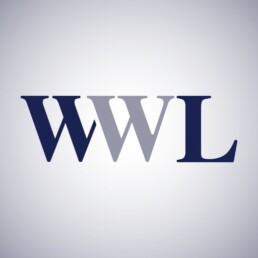CSSF publishes white paper on risks and opportunities of blockchain and DLT
The CSSF has published a white paper setting out technological risks and recommendations for the financial sector regarding blockchain and distributed ledger technology (DLT).
The regulator says use cases can include, in KYC data management, to confirm identity claims through cryptographic proof. It can also be used for improving the speed and security of payments and fund transfers, and for distribution platforms involving tokenization of investment funds that enable investors to subscribe and redeem fund shares or units through a web or mobile application.
However, the CSSF points out that risks can include governance issues, regulatory requirements, the ability to comply with judicial decisions, and legal certainty over blockchain technology and smart contracts.
The CSSF white paper on blockchain and DLT is available here.
CSSF issues circular 21/788 on AML/CFT external reporting
On December 22, 2021, the CSSF issued guidelines for the fund industry regarding the new external report on anti-money laundering and financing of terrorism measures that must be drawn up by an external expert.
To whom does the circular apply, and who is exempt?
According to the circular, all Luxembourg investment fund managers, including registered alternative fund managers and Luxembourg funds supervised by the CSSF for AML/CFT purposes, must provide the external report. It is not required from Luxembourg funds that have appointed a fund manager, whether established in Luxembourg or abroad. In these cases, the external auditor of the funds must nevertheless perform an AML assessment as prescribed by Article 49 (1) of CSSF Regulation No 12-02 of December 12, 2012 on combating money laundering and the financing of terrorist financing.
Who should draft the report?
All investment fund managers required to appoint an approved statutory auditor (réviseur d’entreprises agrée / REA) to audit their annual accounts shall designate the same REA to prepare the external report.
The registered AIFMs, which do not have the legal requirement to appoint a REA for the audit of their annual accounts, must appoint an REA for the specific purpose of preparing the AML/CFT external report.
What should the report contain?
The report is divided into two sections. The first concern the corroboration of answers given by the AIFMs as part of the CSSF annual AML/CFT online survey. The second deals with sample testing or specific work to be performed by the external expert.
Who should submit the report to the CSSF, when and how?
The report must be submitted to the CSSF via the eDesk platform within six months of the closing of the annual accounts. This should be carried out by the Responsable du Contrôle du respect des obligations professionnelles en matière de lutte contre le blanchiment et contre le financement du terrorisme (compliance officer, or RC); the Responsable du Respect des obligations professionnelles en matière de lutte contre le blanchiment d’argent et contre le financement du terrorisme (RR); or a member of the board of directors, or equivalent.
When does the circular come into force?
Luxembourg funds and managers must comply with the provisions of the circular for the financial years ending on or after December 31, 2021. For the financial year ending on December 31, 2021, an extension of three extra months is granted for the submission, up to the end of September 2022.
CSSF circular 21/788 is available here.
For more information, please get in touch with our investment management team.
Sustainable Finance - implementation of SFDR level 2 deferred until January 1, 2023
Implementation of the SFDR regulatory technical standards will be deferred by a further six months to January 1, 2023. The European Commission has confirmed this in a letter to the EU Council on November 25, citing the length and technical detail of the legislation. The delay is attributed to the Commission’s desire to ensure the smooth implementation of the rules by fund managers, financial advisers and regulators. The SFDR level 2 provisions were originally due to be implemented at the beginning of 2022, but in July the Commission pushed back the deadline until July 2022 because of hold-ups that delayed agreement on the RTS and the decision to bundle the 13 standards into a single delegated act.
Feel free to get in touch with our investment management team for more information.
Who's Who Legal (WWL) Private Funds 2022 - Olivier Sciales
We are pleased to announce that our investment funds practice partner Olivier Sciales has been recommended in the Who’s Who Legal Private Funds – Formation 2022 research report released on October 28, 2021. According to WWL, the report identifies leading private funds lawyers worldwide who have outstanding skills and ehttps://whoswholegal.com/olivier-scialesxperience in advising clients on international fund formation and regulatory issues regarding alternative asset classes such as private equity, real estate, venture capital, private credit and hedge funds.
Sustainable Finance - CSSF launches fast-track procedure for compliance with the Taxonomy Regulation
The Financial Sector Supervisory Authority (CSSF) has announced on December 2 the introduction of a fast-track procedure to facilitate submission of updated prospectuses or issuing documents update for UCITS and alternative investment funds under the EU’s Taxonomy Regulation, ahead of a deadline of January 1.
The beginning of next year is the deadline for updates of pre-contractual documents for UCITS and AIFs to incorporate information on environmentally sustainable investments in pre-contractual disclosures relating to climate change mitigation and adaptation goals and the use of templates under the draft regulatory technical standards for the Sustainable Finance Disclosure Regulation.
The Taxonomy Regulation of June 18, 2020 (“TR”), including amendments to the SFDR of November 27, 2019, requires financial market participants to provide transparency for funds subject to SFDR articles 8 and 9 in their pre-contractual disclosures by January 1, in accordance with articles 5, 6 and 7 of the Taxonomy Regulation.
The TR FastTrack procedure is restricted to updates required under articles 5, 6 and 7. Each updated UCITS prospectus submitted for a certified electronic ‘visa stamp’ must be accompanied by a confirmation letter, for which the CSSF has provided a template for UCITS here. The CSSF says that for complete and compliant submissions under the fast-track procedure received by December 17, it will endeavour to provide visa stamps before December 31.
Luxembourg-based authorised AIFMs should submit to the CSSF for each AIF managed the information required under the SFDR and the Taxonomy Regulation to be disclosed to investors under SFDR Article 6(3), sent to the e-mail address opc@cssf.lu. The AIFMs should also indicate where the information has been disclosed to investors, and future updates should be communicated to the CSSF in a timely manner.
The same procedure applies to Luxembourg-based managers registered by the CSSF under the EU venture capital funds (EuVECA) and social entrepreneurship funds (EuSEF) regulations, and to AIFs managed by a Luxembourg registered AIFM, while the regulator says updates to the prospectuses of existing Luxembourg ELTIFs will be handled swiftly on a case-by-case basis. All Luxembourg-based AIFs managed by an AIFM not authorised or registered by the CSSF should apply the requirements imposed by the AIFM’s home regulator.
The CSSF notes that while the SFDR Level 1 requirements regarding pre-contractual disclosures came into force on March 10 this year, the Level 2 requirements have been delayed. The European Commission wrote to the EU Council on November 25 announcing that the implementation of the SFDR regulatory technical standards will now be delayed until January 1, 2023.
However, the CSSF encourages financial market participants already to use for disclosure purposes the pre-contractual and periodic product templates provided in the draft RTS published on October 22. It says the various sections of the templates should be completed as far as possible on a best-efforts basis during the transition period.
Feel free to get in touch with our investment management team for more information.
Crypto funds - CSSF clarifies that Luxembourg AIFs can invest in virtual assets
The Financial Sector Supervisory Authority (CSSF) has issued guidance on the rules governing investment in digital assets by Luxembourg funds, clarifying that alternative investment funds may invest in them, and while UCITS funds may not, the shares of companies active in the digital currency and related ecosystem could qualify as eligible assets.
The regulator notes that it embraces the challenges raised by financial innovation such as virtual assets and is committed to promote an open, technology-neutral and prudent risk-based regulatory approach, while the exponential growth of virtual assets in recent years has generated strong interest as a potential new asset class for both professionals and private investors.
However, the CSSF points out that the emergence of the sector has raised questions from the financial industry in areas such as investments in virtual assets by investment funds, direct investments as opposed to investment through derivatives, and the implications for depository responsibilities.
Wide variety of digital assets
It has now published guidance including a frequently-asked questions document for investment funds on practical issues for financial professionals, reflecting the appeal of virtual assets for portfolio diversification, pointing out that they range from digital representations of traditional assets with a straightforward risk-return basic to more complex representations of digital rights that may be harder to assess. A similar FAQs document for banks will be issued later in December.
The CSSF says that while digital tokens may use the same digital ledger – blockchain – technology and cryptography, they may different or multiple purposes, such as payment, investment or utility, reflect one or more baskets of assets, in some cases fall under the definition of financial instruments subject to existing regulation, be non-fungible and non-interchangeable, such as non-fungible tokens, or be used to finance specific projects such as the creation of a new crypto-currency or the tokenisation of real estate. The specific characteristics of a particular asset will determine the risks and opportunities they present.
The CSSF says any regulated entity considering an activity involving digital assets must conduct thorough due diligence regarding risks relating to volatility, liquidity, technology, counterparties, custody and reputation to assess the risks and benefits affecting its existing business model and risk appetite. This requires the management body to ensure a formal and well-defined risk appetite assessment in all business areas and rigorous decision-making processes are in place.
The regulator also says businesses should be prepared to adapt their business and operational activities to future regulatory developments, notably under the forthcoming European Markets in Crypto-asset Regulation, which will regulate certain types of virtual assets that are outside of the scope of existing legislation, and should proactively engage with the CSSF when planning any activity involving virtual assets.
Implications for UCITS, AIFs, managers and AML/CFT
The FAQs for the fund industry notably says that:
- Investing in virtual assets as defined in the AML/CTF law of November 12, 2004 is not suitable for all types of investors or investment objectives, so UCITS or other funds targeting non-professional customers and pension funds may not invest directly or indirectly in virtual assets. However, assets that qualify as financial instruments, including shares of companies active in the virtual asset ecosystem, are not subject to this restriction and may be eligible investments for UCITS.
- Investment in virtual assets as defined by the AML/CTF legislation may be compatible with funds aimed at professional investors, as long as such investment does not prevent application of and compliance with existing regulatory requirements. Thus an alternative investment fund with an authorised AIFM may invest directly or indirectly in virtual assets as long as the fund’s shares or units are marketed only to professional investors, and the AIFM obtains an extension of authorisation from the CSSF for the new investment strategy. The regulator draws attention to the importance of integration of virtual assets into the investment policy and of adequate internal control functions. Investment managers should make a case-by-case assessment of the impact of virtual asset investments on the risk profile of the fund, and ensure investors are informed in a transparent and timely manner and fund documentation is updated.
- Authorised Investment Fund Managers of regulated or unregulated alternative funds seeking to invest in virtual assets must obtain prior authorisation from the CSSF and provide information or documents including a description of the project and of the services providers or delegates involved, whether the investment is direct or indirect, updated risk management and valuation policies, description of the experience of the portfolio manager and other entities involved in the investment management process, description of the depositary’s role, information about targeted investors and distribution channels, and AML/CTF analysis of the assets. Initiators of funds planning to invest in virtual assets should present its project to the CSSF, in advance, detailing how the investment manager or other participants control the virtual assets through access to or control over cryptographic keys, and an analysis of the services to be provided must be conducted for activities listed under Article 1 (20c) of the AML/CTF law. The investment manager or other entities providing these services must apply to the CSSF for registration as a virtual asset service provider before launching.
- Since investment in virtual assets is liable to increase a supervised entity’s money laundering, financing of terrorism or proliferation financing risk, the CSSF says it must take appropriate mitigation measures. It expects the AML/CFT compliance officer (responsable du contrôle) and compliance supervisor (responsable du respect) to demonstrate adequate understanding of the new risks posed by virtual assets and the necessary mitigation measures, with reference to the national vertical AML/CFT risk assessment relating to virtual asset service providers as well as the FATF guidelines and notably its Guidance for a Risk-Based Approach to Virtual Assets and Virtual Asset Service Providers
The CSSF’s guidance document can be found at: https://www.cssf.lu/en/2021/11/cssf-guidance-on-virtual-assets/
Feel free to get in touch with our investment management team should you wish to receive more information or should you want to establish a crypto fund.
CSSF clarifications on the holding of ancillary liquid assets by UCITS
Further to its press release on 3 November 2021, the Luxembourg Regulator (Commission de Surveillance du Secteur Financier, CSSF) published an updated version of its Frequently Asked Questions (the FAQ) concerning the Luxembourg Law of 17 December 2010 relating to undertakings for collective investment (the 2010 Law) whereby it provides the following clarification regarding the holding of ancillary liquid assets by UCITS foreseen under article 41 (2) b) of the 2010 Law:
- Ancillary liquid assets should be limited to bank deposits at sight, such as cash held in current accounts with a bank accessible at any time, in order to cover current or exceptional payments, or for the time necessary to reinvest in eligible assets provided under article 41(1) of the 2010 Law or for a period of time strictly necessary in case of unfavourable market conditions.
- The 20% limit in deposits made with a same body under article 43(1) of the 2010 Law applies to ancillary liquid assets, as ancillary liquid assets are limited to deposits at sight with banks.
- The holding of such ancillary liquid assets is limited to 20% of the net assets of a UCITS. The 20% limit shall only be temporarily breached for a period of time strictly necessary when, because of exceptionally unfavourable market conditions, circumstances so require and where such breach is justified having regard to the interests of the investors.
- Bank deposits, money market instruments or money market funds should not be included in the ancillary liquid assets under article 41(2) b) of the 2010 Law. Additionally, a UCITS cannot invest in bank deposits, money market instruments or money market funds if it is not indicated in its investment policy and it should specify the purposes, i.e. for investment purpose, cash management or in case of unfavourable market conditions.
- Margin accounts do not qualify as bank deposits nor as ancillary liquid assets. Initial and variation margins relating to financial derivatives shall be considered as collateral received or posted. Regarding margin accounts, the CSSF considers that the 20% limit in deposits made with a same body under article 43(1) of the 2010 Law does not apply. However, in order to avoid undue exposure to a single body, margin accounts shall be taken into consideration in the 20% global limit applicable to an issuer under article 43(2) of the 2010 Law.
The CSSF expects UCITS to comply with the above-mentioned conditions as described in the FAQ as soon as possible and by 31 December 2022 at the latest, considering the best interests of investors.
You may access the FAQ here.
For more information, please get in touch with our investment management team.
Luxembourg AIFs under special limited partnership (SCSp) form may use US GAAP accounting principles
Luxembourg-domiciled alternative investment funds in the form of special limited partnerships (SCSp) may use US GAAP accounting principles under an amendment to the legislation transposing the Alternative Investment Fund Managers Directive into national law. Previously they were required to follow Lux GAAP or IFRS principles. The change, adopted as of July 21, is intended to enable US asset managers to meet the needs of their investors and enhance comparability with other funds.
The law of 21 July 2021 has amended article 20 (3) of the Luxembourg AIFM law.
For more information, please get in touch with our investment management team.
Performance fees: New online CSSF declaration for investment fund managers regarding performance fee model
Further to its communication on 22 September 2021, the Luxembourg Regulator (Commission de Surveillance du Secteur Financier, CSSF) informed the investment fund managers (IFMs) of the launch of a new e-desk module on performance fees as of 30 September 2021. The purpose of such a new module is to ensure compliance with the European Securities and Markets Authority’s guidelines on performance fees applicable to UCITS and certain types of AIFs (ESMA Guidelines) and to collect standardized key information concerning performance fees. Indeed as of 30 September 2021, all funds with a financial year ending between July 2021 and 31 December 2021 will be available in the performance fee module. The IFMs will be required to transmit the performance fee declaration and the confirmation of compliance with the ESMA Guidelines via e-desk. For such funds, the deadline for submission of the initial declarations is 30 November 2021. The same will apply for funds with a financial year ending between 1 January 2022 and 30 June 2022 as from January 2022. The deadline for submitting the initial declaration will be at the latest before the corresponding closing date of each fund, as further specified in the IFM corresponding performance fee e-Desk dashboard.
Funds and sub-funds that are not subject to a performance fee will have to be declared accordingly as well as funds that have not yet been launched since having been approved by the CSSF or which are inactive following the full redemption of their shares or units.
IFMs will also be responsible for ensuring that performance fee declarations are kept up to date in case of changes (e.g., the introduction of a performance fee for the first time after that date or changes in performance fee models). A specific update function will be made available shortly by the CSSF under the new e-Desk module to send electronically any such changes in parallel to the transmission of the modified prospectus/issuing document.
For any further questions, feel free to contact our investment management team.
Non-judicial liquidation of UCITS, UCIs, SIFs and SICARs I CSSF press release
Further to its communication on 31 August 2021, the Luxembourg Regulator (Commission de Surveillance du Secteur Financier, CSSF) decided that there will no longer be a requirement to request a liquidation period extension for funds in non-judicial liquidation. The status of the liquidation will be monitored via the semi-annual reports on the progress of the liquidation to be submitted by the liquidator (i) no later than 30 September of the same calendar year (for the period from 1 January to 30 June) and (ii) no later than 31 March of the following year (for the period from 1 July to 31 December). However, any significant issue shall still be reported to the CSSF without delay, and therefore the liquidator should not wait until issuing the semi-annual report.
For liquidation of sub-funds (i.e. for sub-funds of funds that are on the official list and consequently not in non-judicial liquidation), the request for extension requests is still required when the nine-month deadline is reached.
For any further questions, feel free to contact our investment management team.











